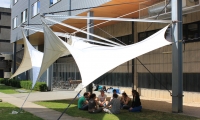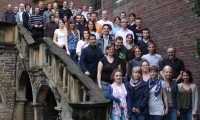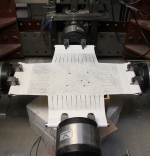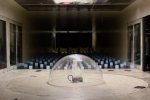Fabrics form a still growing part of the built environment, providing engineers and architects alike with unique properties and possibilities like an exceptionally low self-weight, large freedom of shapes and very efficient structural behaviour.
A structural fabric is however a very complex material which is difficult to characterise and describe numerically. The existence of a wide array of different approaches in testing these materials, the way engineers derive their material parameters and the lack of any form of standardised code defining how these structures should be build make the design of tensile fabric structures an area which requires a great deal of expertise and experience.
Developing an in-depth understanding on how various decisions during the testing of this material influence the outcome and what these different outcomes mean to the practice of designing these structures has been the main focus of this research. By conducting various tests, deriving material parameters and applying these in various numerical models, the influence of various decisions has been established. A statistical methodology of dealing with a large variety of resulting material properties and deriving the least-favourable sets has been proposed and verified.
The generated insights and methodologies provided by this research thus contribute to a better understanding of the structure-material interactions in fabric structures and further pave the way towards a unified, international building code for these structures.




